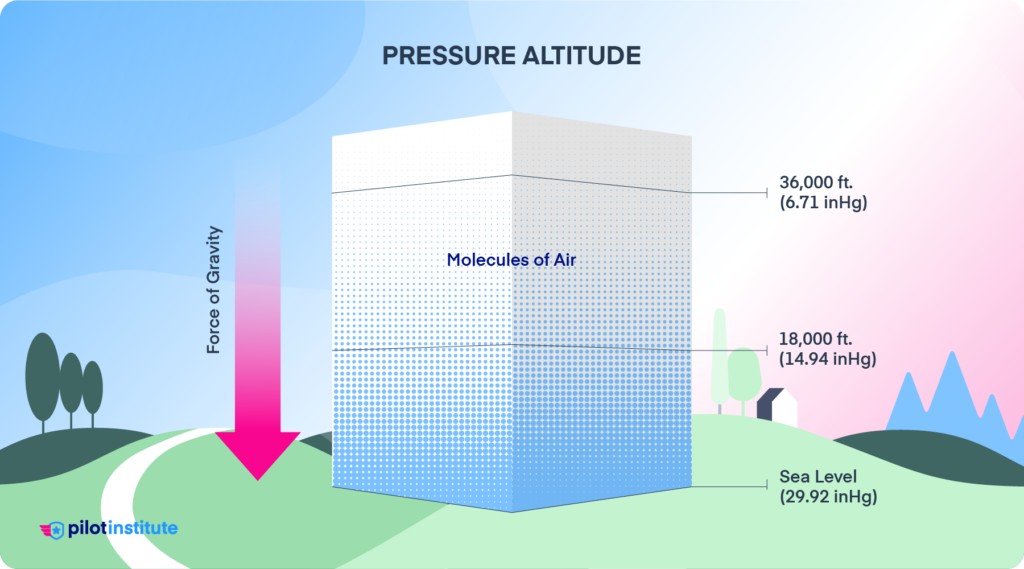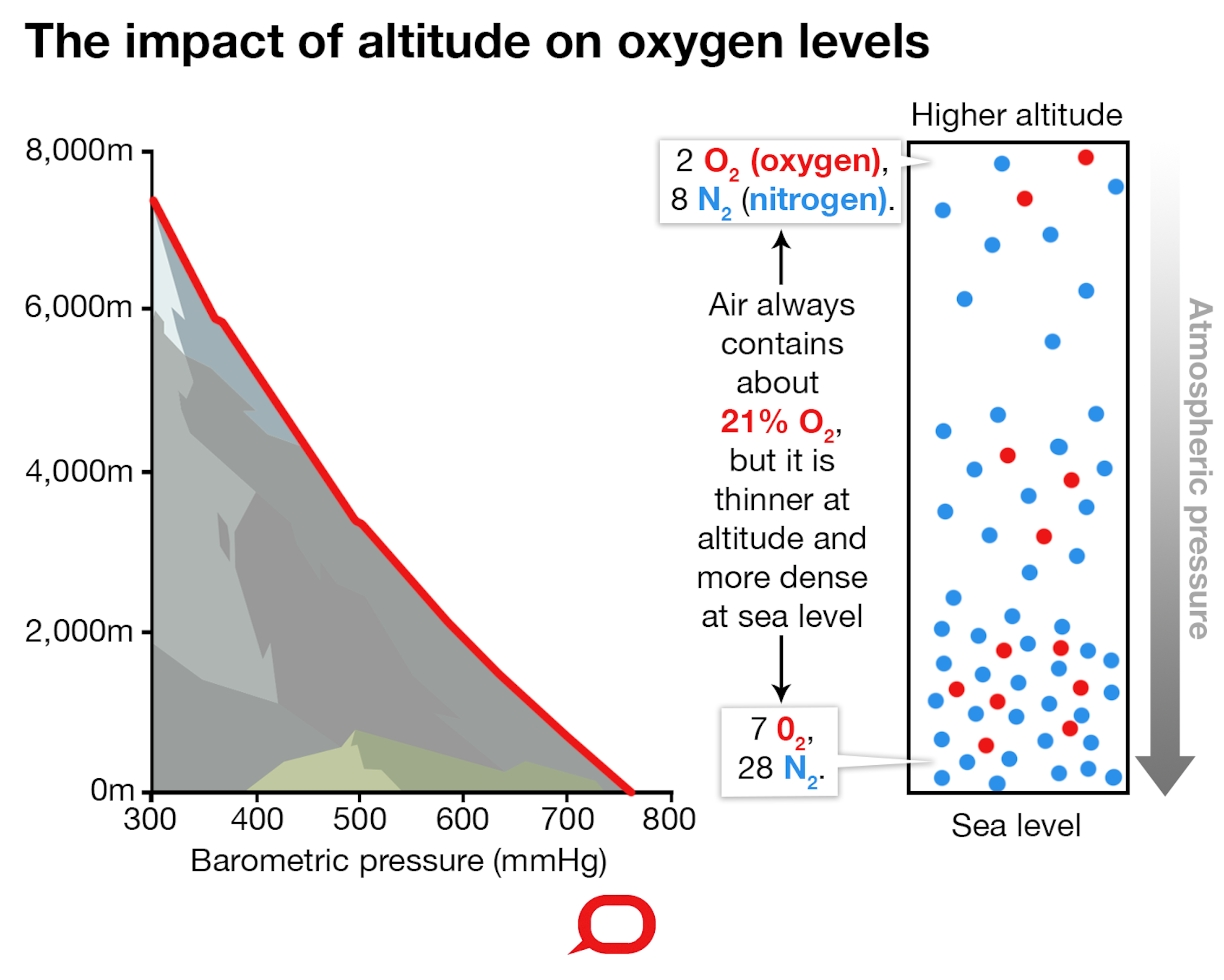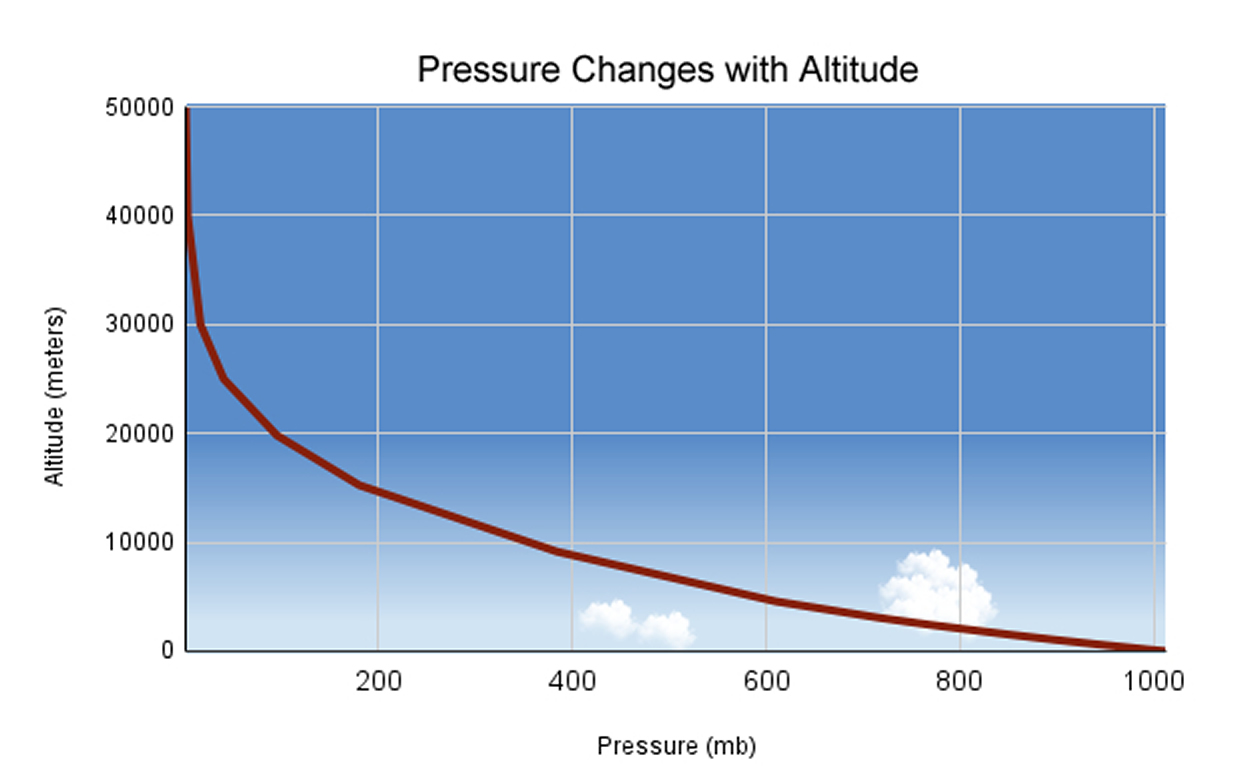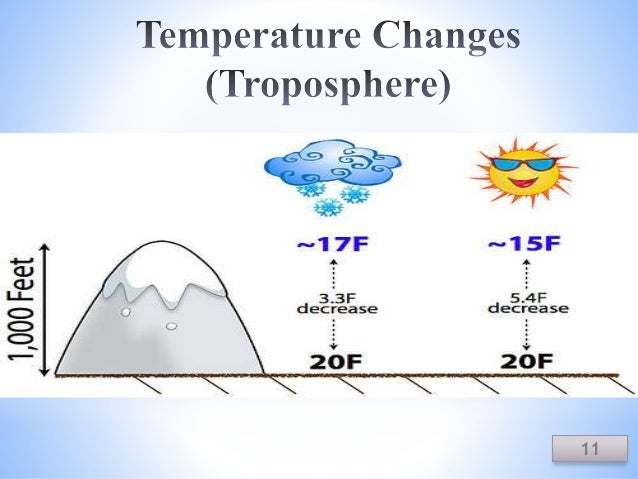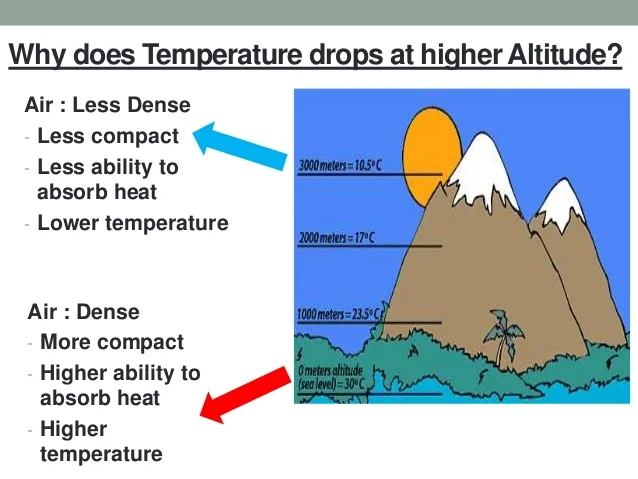Which Factor Increases As A Result Of Increasing Altitude
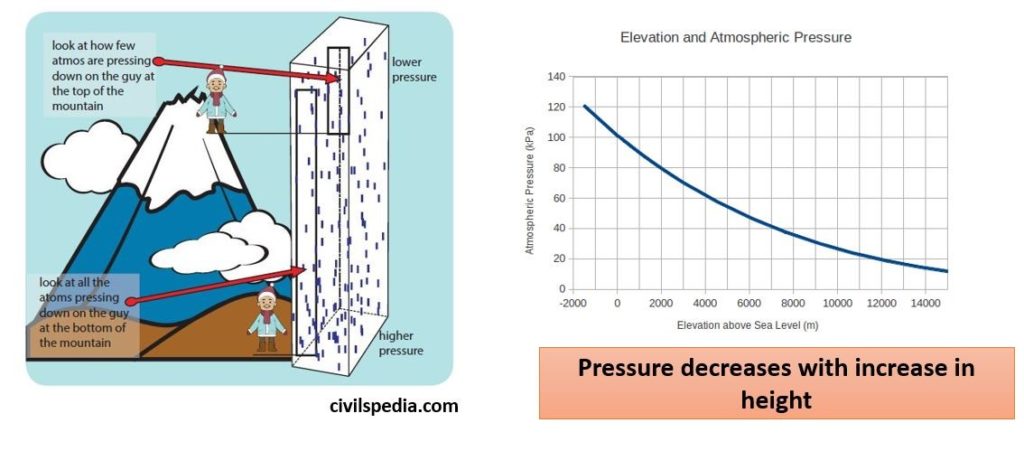
As hikers ascend majestic peaks and pilots soar through the skies, they often experience more than just breathtaking views. A key environmental factor undergoes a significant transformation with increasing altitude: Decreasing Atmospheric Pressure. This change has profound implications for human physiology, weather patterns, and even the boiling point of water.
Understanding how altitude affects atmospheric pressure is crucial for climbers, pilots, meteorologists, and anyone living in or traveling to high-altitude regions. The purpose of this report is to examine the relationship between altitude and atmospheric pressure, exploring the scientific principles behind it and its wide-ranging consequences.
The Science Behind Atmospheric Pressure and Altitude
Atmospheric pressure, also known as barometric pressure, is the force exerted by the weight of air above a given point. Near sea level, this pressure is highest because the air column above is the longest and densest.
As altitude increases, the length and density of the air column above decreases. Subsequently, the atmospheric pressure decreases.
This relationship isn't linear, meaning the pressure doesn't drop at a constant rate. Instead, it decreases more rapidly at lower altitudes and more slowly as you ascend higher.
The Standard Atmosphere Model
Scientists and engineers use a standardized model of the Earth's atmosphere to predict pressure at different altitudes. This model, known as the International Standard Atmosphere (ISA), provides a baseline for calculations and comparisons.
According to the ISA, atmospheric pressure at sea level is approximately 1013.25 hectopascals (hPa) or 29.92 inches of mercury (inHg). With every kilometer increase in altitude, pressure decreases exponentially.
Keep in mind the actual atmospheric pressure can vary due to weather conditions and geographic location.
Impact on Human Physiology
The most significant consequence of decreased atmospheric pressure at high altitudes is its impact on human health. The partial pressure of oxygen, the amount of oxygen available for the lungs to absorb, decreases proportionally with atmospheric pressure.
This leads to hypoxia, a condition where the body's tissues don't receive enough oxygen. Symptoms of hypoxia can range from fatigue and headache to more serious conditions like altitude sickness and pulmonary edema.
Acclimatization, a gradual adaptation to the lower oxygen levels, is essential for individuals spending extended periods at high altitudes. This process involves the body producing more red blood cells to carry oxygen more efficiently.
Climbing and Aviation
Mountaineers face unique challenges due to the extreme altitudes they reach. Supplemental oxygen is often necessary above certain elevations to maintain adequate oxygen levels.
Pilots must also be aware of the effects of decreasing atmospheric pressure. Aircraft altimeters use pressure readings to determine altitude, and inaccurate readings can lead to navigational errors.
Furthermore, the thinner air at higher altitudes affects engine performance and lift, requiring pilots to make adjustments to their flight parameters.
Boiling Point of Water
Another interesting consequence of decreasing atmospheric pressure is its effect on the boiling point of water. Water boils when its vapor pressure equals the surrounding atmospheric pressure.
At sea level, water boils at 100 degrees Celsius (212 degrees Fahrenheit). As altitude increases and atmospheric pressure decreases, water boils at a lower temperature.
This can impact cooking times in high-altitude areas. Foods require longer to cook because water boils at a lower temperature, reducing the amount of heat available for cooking.
Practical Implications
Understanding how altitude affects boiling points is useful in culinary arts and food processing industries. Recipes might require adjustments at different altitudes.
Moreover, knowledge about the boiling point is critical in various industrial processes, such as pharmaceutical manufacturing.
Conclusion
While the air gets thinner and breathing becomes more difficult at high altitudes, decreasing atmospheric pressure is the key factor at play. Its ramifications extend from impacting human physiology to altering the boiling point of water.
Awareness of this relationship allows individuals to take appropriate precautions in high-altitude environments, mitigate potential health risks, and adapt to the changing conditions. The interplay between altitude and atmospheric pressure illustrates the interconnectedness of Earth's systems and the importance of understanding our environment.
Whether you're a seasoned climber scaling a mountain, a pilot navigating the skies, or a resident of a high-altitude community, understanding the science behind these phenomena is essential for safety and well-being.
.jpg)





+How+does+air+pressure+change+as+you+increase+in+altitude.jpg)
